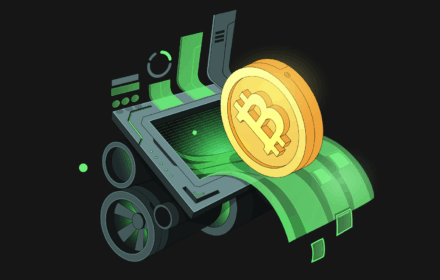The world of cryptocurrencies requires reliable solutions for asset storage. Online wallets provide convenience but are susceptible to hacking and data leaks. For maximum security, investors use hardware crypto wallets – devices that store private keys offline. In 2024, choosing the right wallet becomes particularly important due to the increasing number of hacking attacks and fraud. What features should be considered? What solutions are considered the best in the market? Below is a list of the best wallets to help make the right choice.
What are hardware crypto wallets and how do they work
Hardware crypto wallets are physical devices that store private keys offline. Unlike online formats, they are protected from remote attacks as they do not have a constant internet connection.

Basic principles of operation:
- Storage of private keys. The device generates and stores keys locally.
- Connection when needed. The wallet is connected to a computer or mobile device only for transaction signing.
- Data encryption. Data on the device is protected by complex encryption algorithms.
- Protection against physical tampering. Many models have built-in mechanisms to protect against tampering and data copying.
Using them helps minimize the risk of fund loss. Transactions are signed inside the device and sent to the blockchain without transmitting private keys. This makes hardware crypto wallets one of the most secure ways to store cryptocurrencies.
How to choose a hardware wallet: key criteria
The choice of model depends on several factors. It is necessary to consider cost, security, supported cryptocurrencies, and ease of use.
Key criteria:
- Cryptocurrency support. Some wallets support only popular coins (Bitcoin, Ethereum), while others work with thousands of tokens.
- Security level. Presence of a PIN code, two-factor authentication, and protection against hacking.
- User interface convenience. Ease of device connection and usage, availability of software for different operating systems.
- Cost. Prices of hardware crypto wallets range from 3000 to 15,000 rubles. More expensive does not always mean better.
- Platform compatibility. Make sure the device supports the exchanges and platforms you use.
These criteria will help choose a hardware wallet for both beginners and experienced users. It is important to strike a balance between cost and security level.
Rating of hardware crypto wallets: top solutions of 2024
In 2024, there are many devices on the market for storing cryptocurrencies. Based on security, convenience, and functionality, several leaders can be highlighted.
Ledger Nano X:
- Supports over 1500 cryptocurrencies.
- Bluetooth connection for mobile access.
- Cost: around 12,000 rubles.
Trezor Model T:
- Touchscreen and support for over 1000 coins.
- Open-source code for additional security.
- Cost: around 14,000 rubles.
Ledger Nano S Plus:
- A more budget-friendly version of Ledger with support for 1000+ coins.
- Compact size and ease of use.
- Cost: around 7000 rubles.
KeepKey:
- Intuitive interface and support for popular cryptocurrencies.
- Protection against viruses and phishing attacks.
- Cost: around 8000 rubles.
Ellipal Titan:
- Fully isolated device without internet connection.
- Protection against physical tampering.
- Cost: around 15,000 rubles.
Comparing hardware wallets based on these criteria will help choose the optimal device for asset storage. Each of the presented options guarantees a high level of security and ease of use.
Features of using hardware crypto wallets
Each model has its own features that need to be considered for effective and secure usage. Hardware crypto wallets require regular firmware updates as manufacturers constantly release new versions to protect against modern attacks and vulnerabilities. Ignoring updates can lead to loss of protection and device hacking risk.
Seed phrase storage
A seed phrase consisting of 12 or 24 words restores access to the wallet in case of loss or damage. It is recommended to store it in a secure place, preferably on a physical medium away from potential threats. Losing the seed phrase makes fund recovery impossible, so attention to this aspect is critically important when using hardware crypto wallets.
Creating data backups
Backups help restore access to cryptocurrencies in case of device failure or physical damage. It is recommended to regularly update duplicates and store them separately from the main device to prevent simultaneous loss of data and backup information.

Protection against phishing
Scammers often create fake websites or applications to steal data. Using only official software and verifying the website address before entering data helps minimize risks. Hardware crypto wallets provide a high level of security, but using them wisely and following recommendations make them a truly reliable tool for long-term cryptocurrency storage.
Conclusion
Hardware crypto wallets provide maximum security for storing digital assets. In 2024, choosing such devices is a key step for investors seeking to protect their funds. Using the best models, such as Ledger and Trezor, minimizes risks and ensures fund safety. Selecting a wallet based on supported cryptocurrencies, cost, and user interface convenience will help make an optimal choice and avoid losses.
 en
en  ru
ru  de
de  ar
ar  es
es  nl
nl  hi
hi  fr
fr  it
it  pt
pt  el
el 



